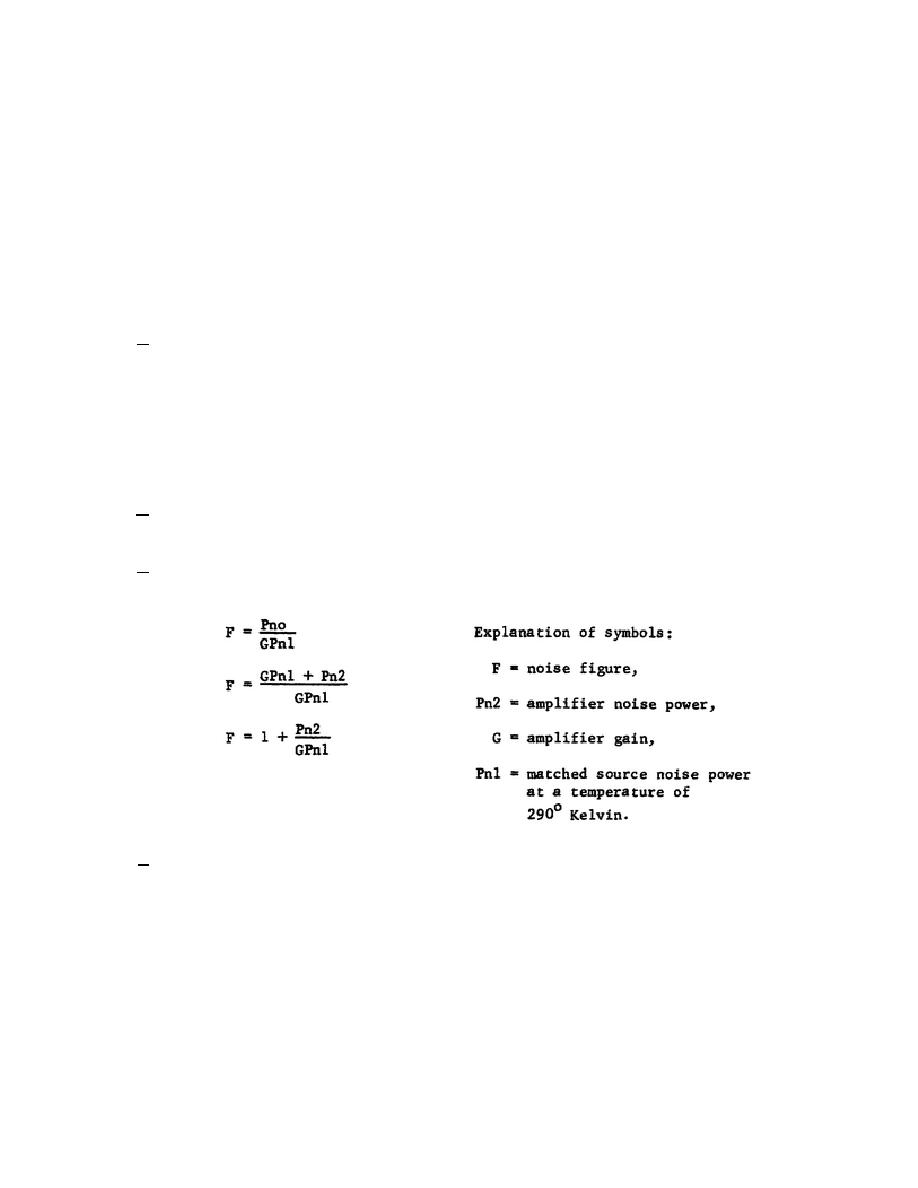
noise figure) have been developed. This paragraph treats only one type, average noise figure, the noise figure
normally used in measuring a receiving system's performance. The noise figure expresses the relative merit of a
receiver in comparison with a so-called perfect receiver. The perfect receiver is one that adds no noise to that
produced by the antenna resistance and has a noise figure of 0 db. The quantity normally is expressed as a power
ratio converted to decibels, and the smaller the noise figure the better the receiver. The noise figure to be
considered is a single number characterizing the receiver and, in a sense, is an average noise figure over the
passband of the receiving system. Separate noise figures or spot noise figures could be quoted at each frequency
within the band, much the same as different gains can be quoted at various frequencies for a simple amplifier.
Just as it is common to refer to an amplifier as a 20-db amplifier, meaning that its maximum gain is 20 db (100),
so is it also common to quote a single noise figure as an average over the whole passband. It is this average noise
figure that will be of greatest interest as a criterion for rating a system's performance. More specifically, it will be
the average standard noise figure.
c. The average standard noise figure gives a measure of the amount of noise that an amplifier (or any
other component) contributes to its output. The noise power at the output of an amplifier (Pno) consists of the
power contributed from two separate power sources--noise power developed within the amplifier (Pn2), and
matched source noise power (Pnl) applied to the amplifier's input. Since the input noise power undergoes
amplification within the amplifier stage, the input noise power (Pnl) is multiplied by the gain (G) of the stage.
The noise output can then be written as
Pno - GPnl + Pn2.
d. If the amplifier were a perfect amplifier and contributed no noise of its own, the total noise output of
the amplifier would be GPnl. However, any practical amplifier contributes some noise.
e. The noise figure of an amplifier is simply the noise output at the load (Pno) divided by the matched
source noise power (Pnl) and the gain (G) of the stage,
f. The noise figure may be quoted as a number or a ratio, or in terms of decibels. For example, a noise
figure of 2 and a noise figure of 3 db have the same meaning. Both expressions indicate that the noise from the
amplifier and the noise from the matched source are the same. The noise figure in decibels can be determined by
formula.
344 L4
144



 Previous Page
Previous Page
